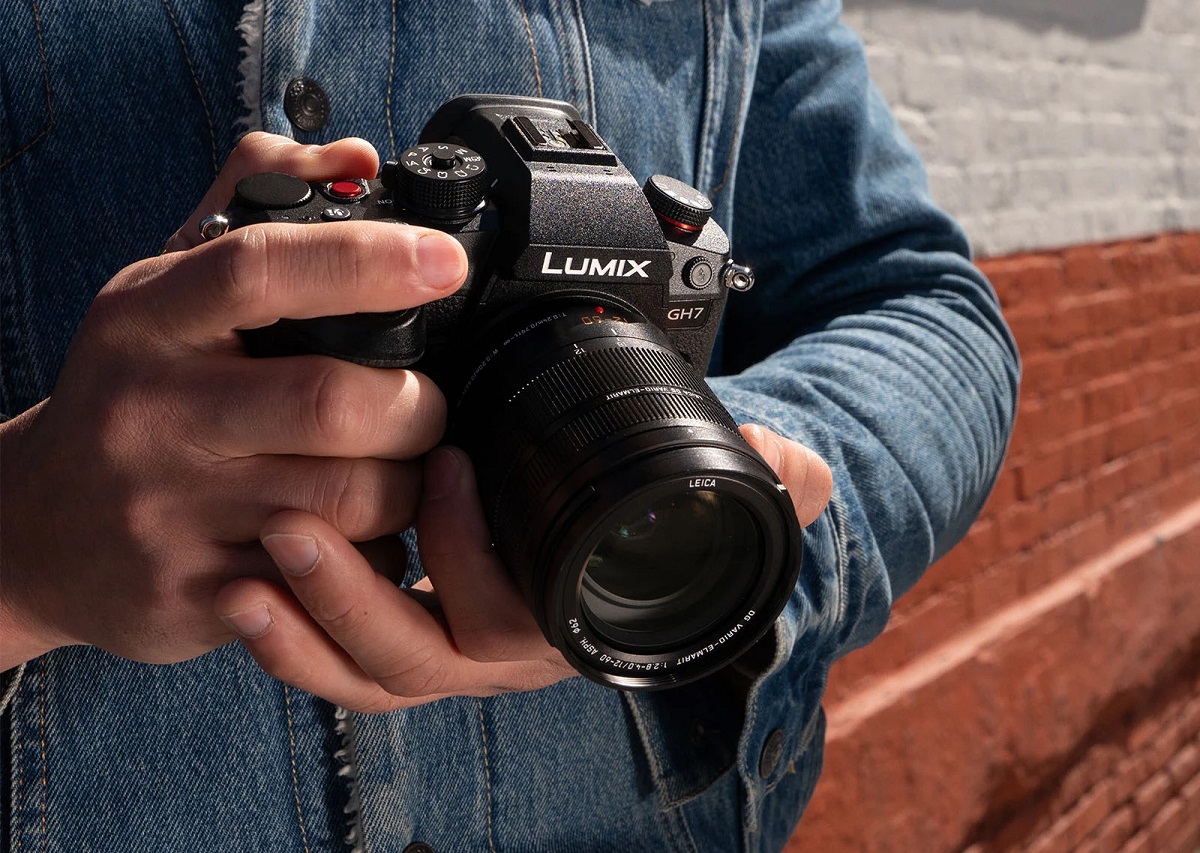
Panasonic has announced the Lumix GH7 as its newest camera and it comes loaded with robust features and wholly new specs.
Among the more notable aspects of the new GH7 is its phase-detection AF and what’s described as the world’s first 32-bit floating recording capacity, but these are just the beginning of what this new camera model offers.
The GH7 is the direct successor to Panasonic’s launch of the Lumix GH6 a little over two years ago and delivers a definitive improvement over the features of that previous and highly acclaimed camera.
Obviously enough, Panasonic had to release a new edition that exceeds what the GH6 offers but in the case of this line, that wasn’t necessarily easy.
Considering just how much praise the older model has received from so many reviewers and users alike since its introduction, the GH7 had to be exceptionally impressive, and it seems that it is.
In the case of the GH7, Panasonic has also done one key thing to improve upon the GH6 camera’s single major defect upon its introduction.
In the GH6, this defect was an (even then) slightly outdated contrast-detect autofocus system that didn’t quite deliver as well as the rest of the camera it was built into. Panasonic has now rectified this in the GH7.
The new model includes a far superior phase-detect AF (PDAF) that’s the same as that found in the brand’s Lumix S5 II and Lumix G9 II camera models. This is guaranteed to deliver much better overall AF performance in this model, in addition to what its other features offer.
Otherwise, the Panasonic Lumix GH7 superficially looks much like the GH6 did, almost to the point of tricking a potential buyer into thinking that little has changed and no reason to upgrade exists.
However, despite having the same hefty external body, the same internal cooling fan, the same array of buttons and the same tactile LCD design for filmmaking, internally its specific differences are highly notable.
The new model’s sensor is still a Micro Four Thirds design and even shares the same pixel density as that of the GH6 at 25.2MP.
However, it also has new features such as a BSI CMOS design with 13+ stops of dynamic range and advanced internal image stabilization that’s further boosted by distortion correction for video and a High I.S mode for further steadiness during rough shooting.

Then there’s the above-mentioned phase-detect AF, which lets this camera and its sensor track and focus on objects more accurately while being able to track subjects such as human faces, animals, eyes and other important objects like moving machines.
The new camera’s recording resolutions further boost its videography chops. These include internal video recording at up to 5.7K 30p ProRes 422 HQ, and ProRes RAW HQ for high-quality color shooting. It can also manage 5.7K at 60fps and 4K at 120p, or if you need something lighter, 1080p HD at 240fps.
Another very useful aspect of the GH7 for filmmakers and videographers is that the camera doesn’t have limits (except in terms of storage) on how long it can shoot for. This is thanks to its integrated heat dissipation and cooling fan additions.

One further useful and powerful recording feature of the GH7 is called Open Gate. This lets the camera capture video while using all of its sensor space so that a user can later crop it as needed in post.
Integration with Adobe’s Frame.io is also part of the GH7 package, letting you shoot from camera to cloud backup on the fly.
Finally, there’s a Real-Time LUT Component in the GH7, which it shares with the Lumix S9, that lets users program color grading directly into footage during shooting.

Overall, for filming movies, documentaries, or just about any professional work you need, the GH7 is one superb compact camera for the job through the space above and others.
In its audio specs, the GH7 also delivers strong complementary features for video recording. These include the particularly notable new 32-bit float recording feature.
This is the first-ever case of this technology in a compact interchangeable lens camera and if used with Panasonic’s own XLF microphone adapter, the Lumix DMW-XLR2, this 32-bit float recording feature lets users capture a far broader range of sounds without having to waste time on audio level adjustments.

The Lumix GH7 with the Lumix DMW-XLR2 adapter
For photography, the Lumix GH7 is absolutely no slouch either. Though this camera has been designed with video-oriented users firmly in mind, its Micro Four Thirds sensor is more than ideal for superb photographic performance across the board, but especially during street, nature and action photography.
Indeed, thanks to the camera’s excellent new PDAF and object detection AI, its tracking autofocus should capture moving objects and dynamic compositions very well. Also, though the sensor is Micro Four Thirds, its 25.2MP size ensures plenty of detail for large photographic blow-ups.
Panasonic is going to make the Lumix GH7 available as of July for a suggested retail price of $2,199.99. You can also pre-order it now.
Credit : Source Post



